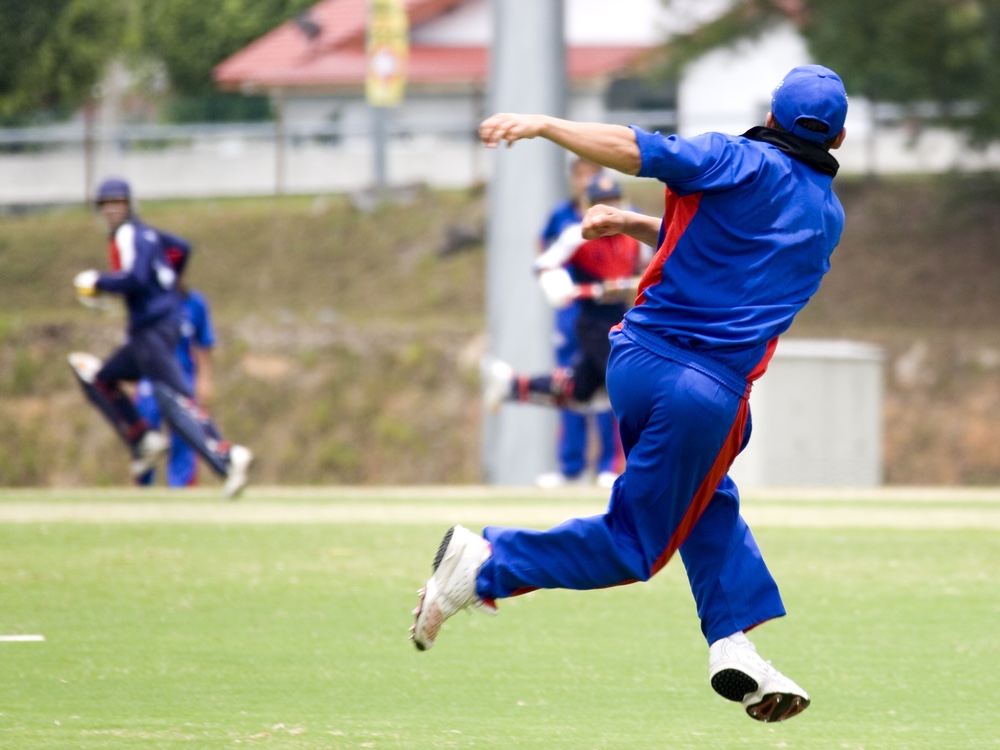|
 One of the big coaching challenges is developing the athleticism of fast bowlers. One of the big coaching challenges is developing the athleticism of fast bowlers.
More than that, enabling the “six footers” to have the confidence to use their athleticism and throw themselves around in the field can seem like an impossible task, both in the chilly early season, and late season when the ground hardens up and the lush green grass is a thing of the past.
Something I’ve developed at The Portsmouth Grammar School over the past few years is a regular catching and fielding routine that’s designed to make players feel more confident with contact with the ground. As well as educating them in the positions they can get into that will minimise impact.
Try working through this series of drills and see if you can help your players believe in themselves a little more when diving for the ball:
Heel taps
This game engages muscles throughout the body, in particular the core, chest and shoulders. However, it’s also a great way to familiarise players with being on the ground. Psychologically a great start!
Set up a coned area 8x8m. Put 10–12 players in the square. Players can only move around on their hands and feet, with the objective being to tap and opponent on the heels. As soon as someone gets tapped on their heel, they do 3 alternating sit ups and press ups. 3 lives and they’re out, last man stands!
Kneeling end ball
Most of you will have played end ball, a netball variation, or a type of any direction tag rugby. Simply by adapting the game and getting all the players to move around on their knees you will start developing their confidence on the floor. As they shuffle around the pitch, occasionally falling the the floor from a significantly less daunting height.
Knee catches
Starting turning up the fielding and catching volume by pairing your players up and catching a good 20–30 catches each, again in a kneeling position now just 5m apart. Simply by throwing firm controlled catches to their left and right, stretching their movement, not only will they start to relate their movements to a higher speed match situation, but they’ll also start to realise the importance of using their legs to power their movement and their hips to rotate when trying to move towards a ball.
Stretch the catches out a little wider and we get our fielders into the early stages of diving. They’re not falling from a great height, but they are hitting the floor, and hopefully starting to associate that with the success of taking a catch, rather than the pain of hitting the floor.
This is also a great time to introduce the different landing methods to the players: sliding with outstretched arms, or rolling to make ground impact on your opposite shoulder are two popular methods than spread the surface area and take the impact away from the ball.
Adopting the power position
As individual players become comfortable with diving from their knees, move them one by one up onto their feet in a squat. Reinforce the idea of getting their knees bent close to 90 degrees, and keeping their chest up. Also remind them that from this position they’re only fractionally higher than they were in their kneeling stance.
While their impact won’t be much higher, suddenly their power and diving range will go through the roof as they use their legs to power themselves left and right.
It’s at this stage we need to reiterate the landing styles, and consider how directly they move towards the ball. A rainbow dive may sound like it wouldn’t hurt, but the straight line bullet approach is a lot easier on the knees and hips.
Adding the approach
To complete the series have your players walk in and take a short jump into the previously described power positioned, a close to 90 degree squat. If players are able to dive and slide with confidence from the power position, the only task here is transferring them into it from their walk.
To begin with practice this without the ball, before reintroducing it and stretching them into a dive both left and right. Hopefully you’ll start to see some fielders moving through the air like Ben Stokes, and a few bowlers reacting like Stuart Broad at Trent Bridge.
This may be a process you want to work through over 45 mins during a sessions. However, I like it to be something we get our players to do in a shortened version over 4–5 mins on match day.
Either way it will be equally rewarding when your gangly mid on takes a sharp chance diving horizontal in mid air, without a thud of the ground or a grazed elbow in sight.
Discuss this article with other subscribers
|

.jpg)



.jpg)

